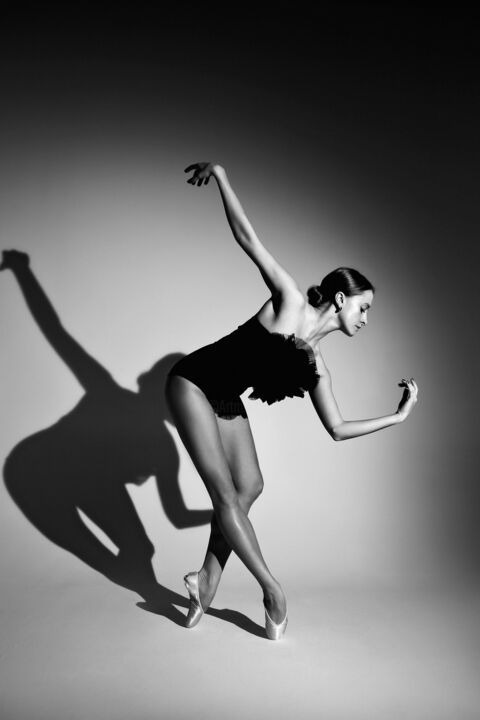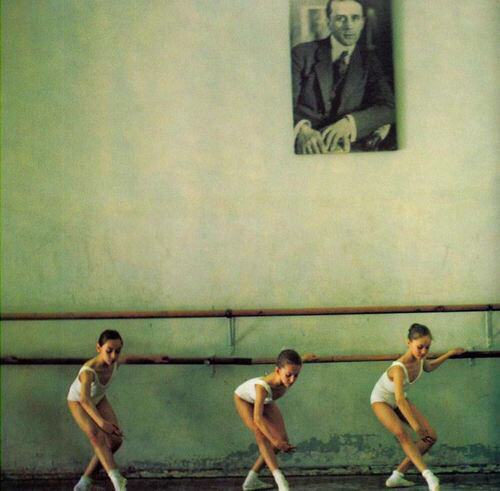Text

angelica generosa and jonathan batista photographed rehearsing as giselle and albrecht for giselle by lindsay thomas
37 notes
·
View notes
Photo


Ashley Shaw as Victoria Page in Matthew Bourne’s The Red Shoes
371 notes
·
View notes
Photo

Marcus Morelli - The Australian Ballet - photo by Chris Rogers-Wilson
48 notes
·
View notes
Photo
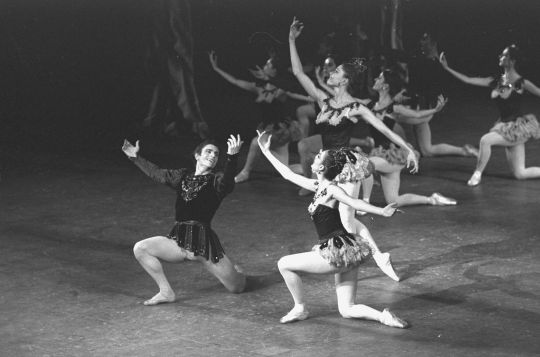
Edward Villella, Patricia McBride, and Marnee Morris in Rubies, 1967 ph. Martha Swope
7 notes
·
View notes
Text
When can we use blackface in ballet?
In the past years, growing attention has been paid to the presence of racist stereotypes in the ballet world, particularly the use of blackface.
Almost entirely banned in northern America and Europe, this practice is still very much in use in the Soviet world. In Russia in particular, the idea of blackface being a racist and grotesque practice has always been vehemently rejected, almost to the point of absurdity (think of the Instagram picture of the Vaganova student in full blackface as part of the now infamous Danse des Negrillons). So it was really shocking seeing it on stage for the first time.
This was before the pandemic when I went to Saint Petersburg as a birthday present to myself to see the Mariinsky Theatre in Spartacus. Mind you, this is not Grigorovich's version of Spartacus, which the Bolshoi is known for and which focuses on the main characters, giving them great virtuosic variations.
Yakobson's Spartacus at the Mariinsky Theatre
The one at the Mariinsky is an incredibly grandiose and opulent production, which puts a huge emphasis on the depiction of scenes of Roman everyday life (they even brought a horse on stage).
And then came a scene depicting the first battle of the gladiators in Act I (of which a snippet can be found here). There are three gladiators fighting: one is in a "brown tan", one is in a very dark blackface, and the other is white. In the synopsis, it is described as a fight between a "Gaul" (from France), a "Numidian" (from North Africa), and an "African".
But the aim was historical accuracy...
Using the tan in this way was of course a very obvious way of conveying the place of origin of these gladiators, even to those like me who weren't familiar with this production. However, I realise that what resonated with me the most, was the willingness to depict the multi-national and multi-racial character of the Roman empire, which spanned from England to northern Africa, to the Middle East. Something that is often overlooked in our whitewashed version of Roman history.
Even though this was the first time I saw full blackface in the theatre, and believe me when I say it truly shocked me, I somehow found myself appreciating this element of historical accuracy.
Could that have been achieved in a different way?
Actually, yes.
Gladiators from different regions wore different weaponry, so different armour choices could have been sufficient to distinguish between the three different fighters, albeit in a less obvious way.
Was this ok?
At the end of the day, even though the motivation is understandable, and could even be painted in a light of inclusivity, this practice only worked because of the particular context it was in. It was a way of communicating meant by and for Russians who are notoriously not as diverse as the modern audience in America or Europe.
I, just like the Russian audience, didn't feel personally attacked by the use of blackface, as I never had to deal with that very specific form of discrimination based on skin colour. This is why I could focus on the fact that that particular costume choice was meant as a way to include historically accurate details.
Reimagining more inclusive representation on stage requires a greater diversity not just amongst the ballet dancers, but most importantly within the artistic direction, so as to include a different sensibility in the whole production.
What do you think?
3 notes
·
View notes
Text
Even Nureyev got cancelled (and for good reasons)
Apparently, it is very hard to get away with terrible behaviour, even if you are Nureyev.
Hailed as a superstar, his legendary status still shines 30 years after his death as arguably the most famous ballet dancer ever. But I'm not sure many are aware of his problematic and incredibly erratic behaviour, on and off stage.
What shocked me the most?
In 1969, during the premiere of Giselle with La Scala ballet, he slapped a ballet dancer WHILE ON STAGE.
Yes, you read that correctly, DURING THE PERFORMANCE.
The reason? After landing a bit off, Nureyev found himself too close to the corps de ballet. Upset, he proceeded to INSULT the closest ballerina, who DARED to respond in kind. And low and behold, the great Nureyev thought it appropriate to SLAP the girl who, understandably shocked and upset, fled the stage.
But this is not the end. Nureyev then FOLLOWED her backstage, where he had to be restrained by stagehands, all while "Giselle" had to IMPROVISE a variation because her "Albrecht" was suddenly missing.
Of course, the theatre tried to shut the whole thing down, but it is hard to hide from A LITERAL AUDIENCE, and so news of this shenanigan travelled quickly all over the world.
To save face, La Scala pulled the entire upcoming production of the Nutcracker, of which Nureyev was going to be the star, and replaced it with a recast Giselle. The exile didn't last long though, and mere months after the incident he was cast again to open the summer season.
As for the girl, who filed a formal complaint for slander and battery, she was painted as an arriviste who was only after fame and was downgraded as an understudy for two years.
Crazy, right?
12 notes
·
View notes
Text
Why I'm Starting To Write Online
Here are a few reasons why:
I have been passionate about ballet since I was born. I even had my mum change her work schedule so that I could attend ballet classes. In the beginning, I only wanted to know more about how to perform better, how to stretch to get better extensions, how to hold my leg higher, or how to do more pirouettes.
After a while, my interest started to shift gradually to what is happening behind the scenes. I now want to know more about the work that goes on to create a whole production, the choices behind a specific choreography and casting decisions. But also the social and cultural implications of the ballet world: how life influences certain ballet productions, but also how ballet influences life.
I have noticed that these sorts of themes are still a bit missing nowadays. You can find whole YouTube channels dedicated to diversity and stereotyping issues on popular TV shows (yes, Emily in Paris), something about the operatic world, but not so much about ballet.
Over the next 30 days, I plan on writing about diversity, stereotyping, and the cancel culture in the ballet world, as I dive into the topic more seriously.
Join me on this adventure—and let me know if you have any questions along the way!
I'm excited to start sharing what I know online.
3 notes
·
View notes
Text
3 Topics I am Exploring Right Now
There are 3 topics I am actively thinking about a lot these days:
Topic #1: Nureyev's production of the Nutcracker and how to deal with stereotyping choreographies
I first got interested in this specific production of the Nutcracker a few days ago, when I first watched its premiere on Italian tv. It was an incredible performance by the dancers, and a humongous amount of work by Manuel Legris and Aleth Fancillon, in presenting the original choreography, as well as the costumes and scenography by Nicolas Georgiadis.
However, what left me quite upset, was the presence of outright denigratory stereotypes, both in the Arab dance, with the depiction of lazy, avaricious men and overly sexualised women, and in the Chinese dance, with the outright use of yellowface.
Topic #2: Sergei Polunin and the cancel culture in the ballet world
If you haven't been living under a rock, you already know about Sergei Polunin, the "bad boy of ballet".
Once hailed as the new ballet superstar after Nureyev and Baryshnikov, he has now become a pariah in the Western World after doubling down on his support for Putin, and he has seen all of his upcoming shows in Europe cancelled.
Topic #3: diversity in the ballet world
I also have an interest in learning more about diversity in the ballet world. This is very much linked to topic #1 since it is the lack of diversity that feeds the perpetuation of backward stereotypes.
Currently reading the Diversity Report produced during the pandemic by the Paris Opera Ballet.
It would be great to connect with other people who are interested in these same topics—so if any of the above resonates, feel free to reach out!
1 note
·
View note
Text

Hugo Marchand and Leonore Baulac rehearse 'La nuit s' acheve' de Benjamin Millepied, Paris Opera Ballet ♡
170 notes
·
View notes
Photo

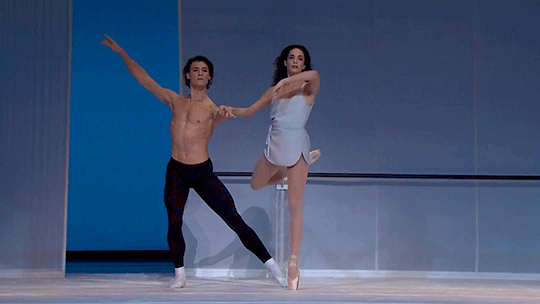
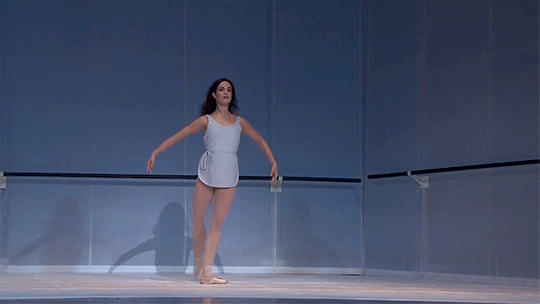
Amandine Albisson and Hugo Marchand in Afternoon of a Faun.
27 notes
·
View notes
Text

Barre class @ Opera de Lyon
6 notes
·
View notes
Photo

Alexandra Lo Sardo
Royal Danish Ballet
6 notes
·
View notes
